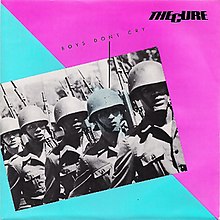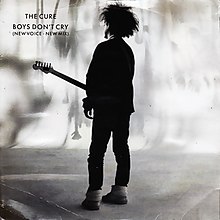
The Cure are an English rock band formed in 1978 in Crawley, West Sussex. Throughout numerous lineup changes since the band's formation, guitarist, lead vocalist, and songwriter Robert Smith has remained the only constant member, though bassist Simon Gallup has been present for all but about three years of the band's history. Their debut album, Three Imaginary Boys (1979), along with several early singles, placed the band at the forefront of the emerging post-punk and new wave movements that had sprung up in the United Kingdom. Beginning with their second album, Seventeen Seconds (1980), the band adopted a new, increasingly dark and tormented style, which, together with Smith's stage look, had a strong influence on the emerging genre of gothic rock as well as the subculture that eventually formed around the genre.
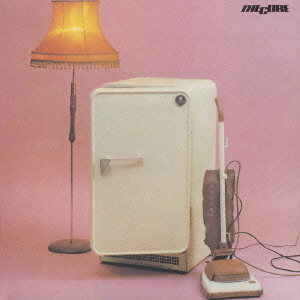
Three Imaginary Boys is the debut studio album by English rock band the Cure, released on 11 May 1979 by Fiction Records. It was later released in the United States, Canada, and Australia with a different track listing as a compilation album titled Boys Don't Cry.
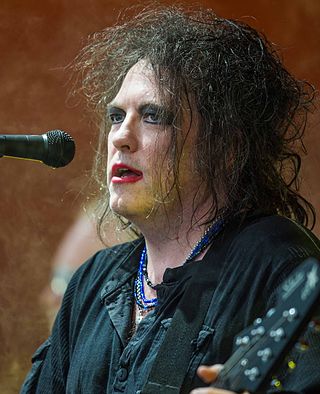
Robert James Smith is an English musician, singer, songwriter, and record producer. He is best known for his work as the co-founder, lead vocalist, guitarist, primary songwriter, and only continuous member of the rock band the Cure since 1978. His unique guitar-playing style, distinctive singing voice, and fashion sense—almost always sporting a pale complexion, smeared red lipstick, black eye-liner, unkempt wiry black hair, and all-black clothes—were highly influential on the goth subculture that rose to prominence in the 1980s.
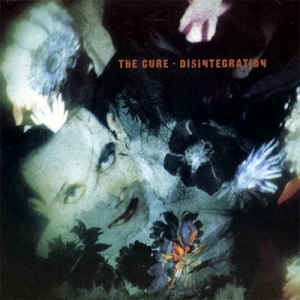
Disintegration is the eighth studio album by English rock band the Cure, released on 2 May 1989 by Fiction Records. The band recorded the album at Hookend Recording Studios in Checkendon, Oxfordshire, with co-producer David M. Allen from late 1988 to early 1989. Following the completion of the mixing, founding member Lol Tolhurst was fired from the band.
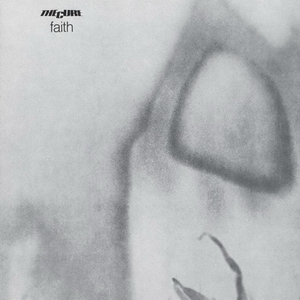
Faith is the third studio album by English rock band the Cure, released on 17 April 1981 by Fiction Records. The album saw the band continuing in the gloomy vein of their previous effort Seventeen Seconds (1980). This stylistic theme would conclude with their next album Pornography (1982).

Boys Don't Cry is the Cure's first compilation album. Released in February 1980, this album is composed of several tracks from the band's May 1979 debut album Three Imaginary Boys with material from the band's 1978–1979 era.
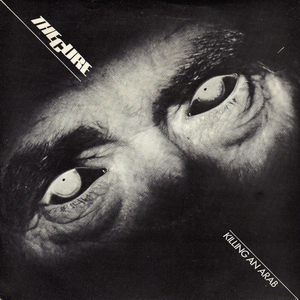
"Killing an Arab" is the first single by the Cure. It was recorded at the same time as their first album Three Imaginary Boys (1979), but not included on the album. However, it was included on the band's first US album, Boys Don't Cry (1980).

Galore: The Singles 1987–1997 is the second singles compilation by The Cure and was released on 28 October 1997. It contains singles from the years 1987–1997. The song "Wrong Number" is the only new song on the album.

Greatest Hits is a greatest hits album by English rock band the Cure. It was first released in Japan on 7 November 2001, before being released in the UK and Europe on 12 November and then in the US the day after. The band's relationship with longtime label Fiction Records came to a close, and the Cure were obliged to release one final album for the label. Lead singer Robert Smith agreed to release a greatest hits album under the condition that he could choose the tracks himself. The band also recorded a special studio album released as a bonus disc to some versions of the album. The disc, titled Acoustic Hits, consists of the eighteen songs from the North American release re-recorded using acoustic instruments.

Standing on a Beach is a greatest hits album by English rock band the Cure, released in the United States on 15 May 1986 by Elektra Records and in the United Kingdom on 19 May 1986 by Fiction Records, marking a decade since the band's founding in 1976. The album's titles are both taken from the opening lyrics of the Cure's debut single, "Killing an Arab".

Concert: The Cure Live is the first live album by English rock band the Cure. It was recorded in 1984 at the Hammersmith Odeon in London and in Oxford during The Top tour. The cassette tape edition featured, on the B-side, a twin album of anomalies, titled Curiosity : Cure Anomalies 1977–1984.

"Lovesong" is a song by English rock band the Cure, released as the third single from their eighth studio album, Disintegration (1989), on 21 August 1989. The song saw considerable success in the United States, where it reached the number-two position in October 1989 and became the band's only top-10 entry on the Billboard Hot 100. In the United Kingdom, the single charted at number 18, and it peaked within the top 20 in Canada and Ireland.

The Cure in Orange is a concert film by British rock group The Cure. It was shot on 35mm film at the Théâtre antique d'Orange in the French countryside, on 8, 9, and 10 August 1986. Band members Robert Smith, Simon Gallup, Porl Thompson, Boris Williams (Drums), and Lol Tolhurst (Keyboards) make their way through 23 songs, under the direction of Tim Pope.
Michael Stephen Dempsey is an English musician, best known as the bassist for The Cure and The Associates.
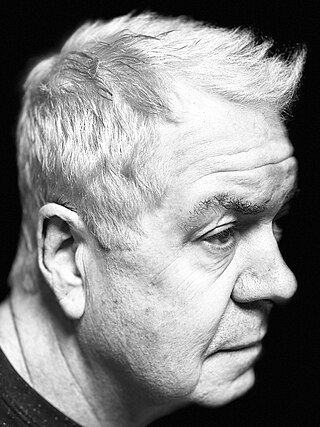
Laurence Andrew "Lol" Tolhurst is an English musician, songwriter, producer, and author. He was a founding member of The Cure, for which he first played drums before switching to keyboards. He left the Cure in 1989 and later formed the bands Presence and Levinhurst. He has also published two books and developed the Curious Creatures podcast.

"Jumping Someone Else's Train" is a song by English rock band The Cure. Produced by Chris Parry, it was released on 2 November 1979 in the UK as a stand-alone. It later appeared on the US version of the band's debut album, Boys Don't Cry (1980).

"Let's Go to Bed" is a song by English rock band the Cure, released as a stand-alone single by Fiction Records in November 1982. In the aftermath of the dark Pornography, Robert Smith returned from a month-long detox in the Lake District to write the song, the antithesis to what the Cure currently represented. It was later included on the album Japanese Whispers, which compiles the band's three singles from 1982 to 1983 and their five B-sides.

"The Walk" is a song by English rock band The Cure, released as a stand-alone single in June 1983. It later appeared on the compilation album Japanese Whispers. It was recorded when the band was briefly reduced to the two founding members Robert Smith and Lol Tolhurst following the departure of bassist Simon Gallup following the end of the band's previous tour in support of the album Pornography. in May 1982. According to Lol Tolhurst, they chose producer Steve Nye at the time due to his work on the album Tin Drum by Japan. Tolhurst later commented: "It was the first time we had worked with a 'proper' producer, as opposed to doing production with an engineer that we really liked. […] He was able to make electronic instruments sound more natural, and that's what we wanted."

"Charlotte Sometimes" is a song by English rock band the Cure, recorded at producer Mike Hedges' Playground Studios and released as a non-album single on 9 October 1981 by Polydor Records, following the band's third studio album Faith. The titles and lyrics to both sides were based on the book Charlotte Sometimes by Penelope Farmer.
The Cure: "Reflections" refers to a set of shows in which The Cure played their first three albums Three Imaginary Boys, Seventeen Seconds and Faith in full at the VividLive festival at the Sydney Opera House on 31 May and 1 June 2011. All three albums were played in their entirety on both nights, along with several other tracks from the same era.
